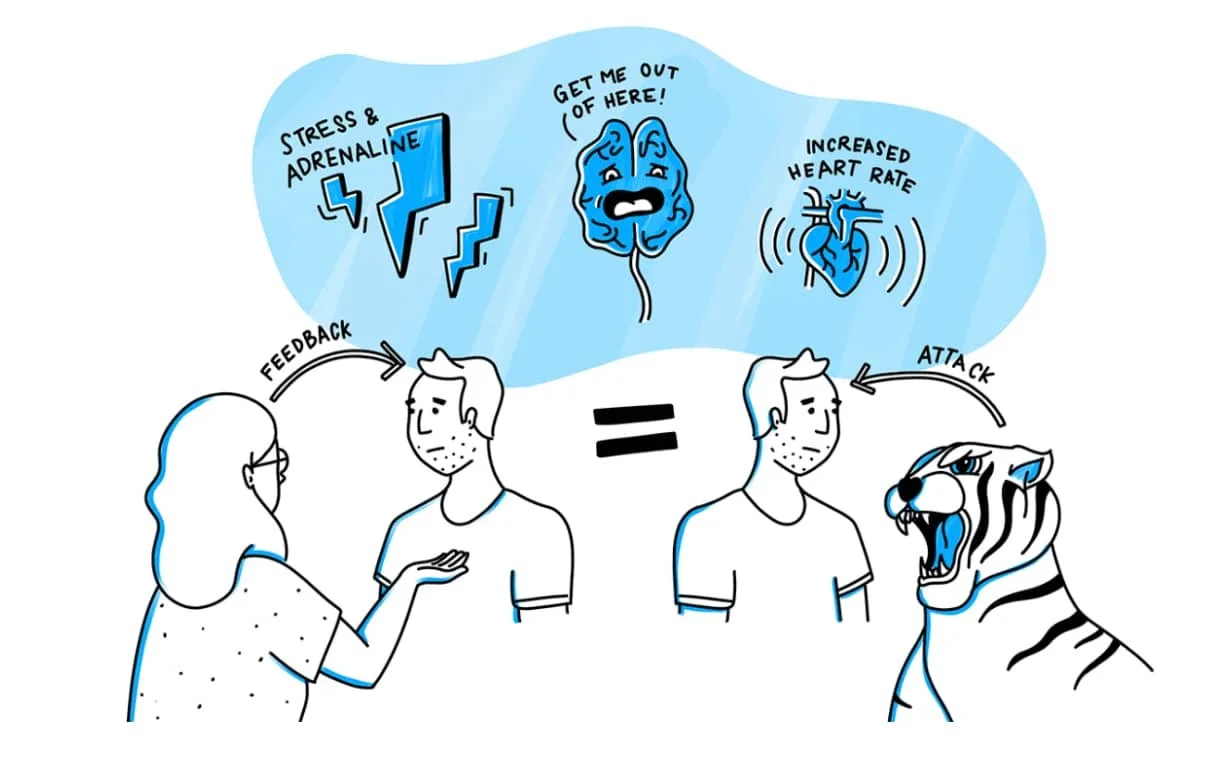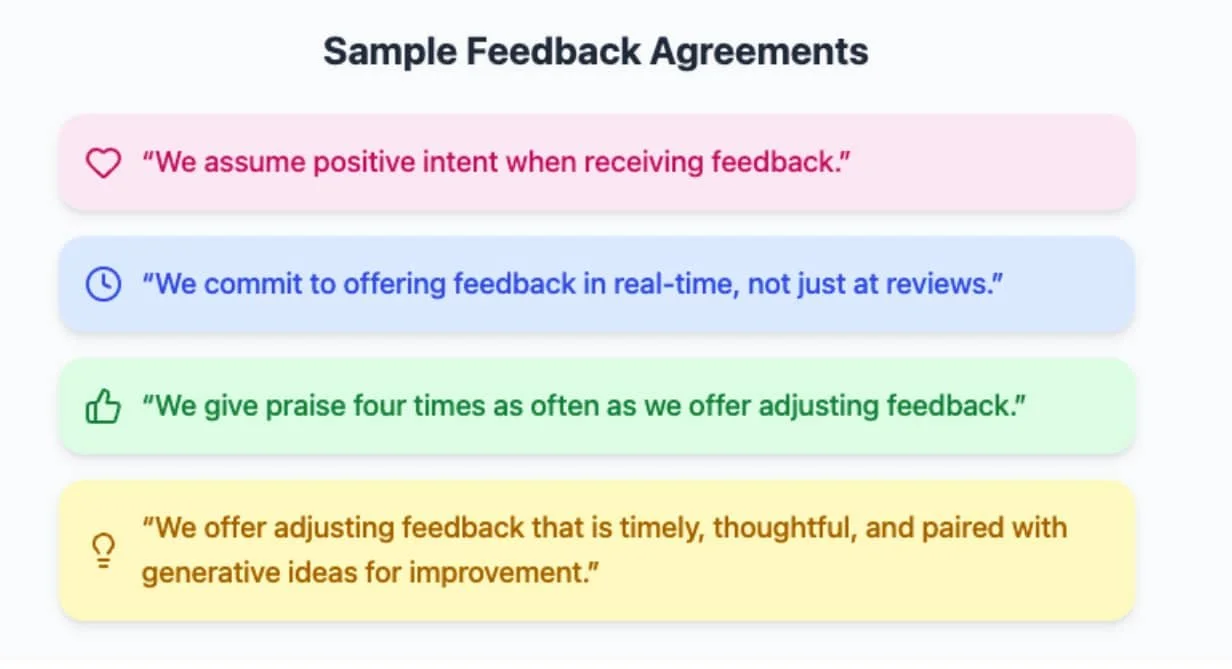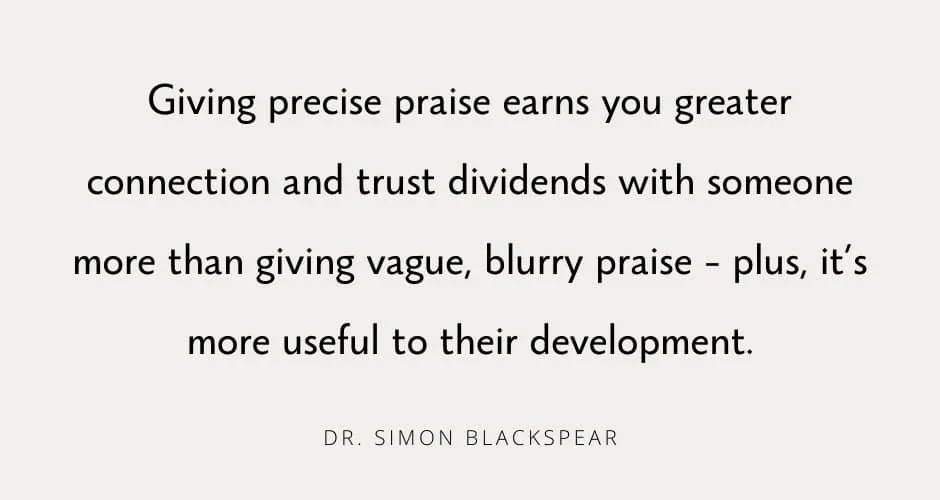Building a Culture of Feedback
When it comes to building a learning organization committed to continuous improvement, there may be nothing more essential than creating a culture of feedback.
Think back to a significant moment of growth in your own leadership journey. Odds are, feedback played a role. Maybe someone gave you a nudge that helped you see what was possible. Maybe they pointed out a blind spot that helped you improve. Maybe they simply saw potential you didn’t yet fully see in yourself yet. That moment likely left a mark and helped you take a meaningful leap in your development as a leader.
Now imagine that same dynamic, but across an entire team. Everyone notices each other. Everyone is investing in each other’s growth. Everyone gives and receives feedback in all directions. It's possible when you have a culture that encourages and sees the value of feedback.
The good news? Through designing feedback systems and a willingness to try on new practices, your team can begin building a culture of feedback.
The Feedback Gap
Unfortunately, while giving feedback may feel like common sense, it’s not common practice for most teams. According to Gallup, 80% of employees who say they’ve received meaningful feedback in the past week are fully engaged. But only 16% say their last conversation with a manager was “extremely meaningful.” That gap matters, and it’s costing organizations deeply in performance, engagement, and trust.
Overcoming our Negative Association with Feedback
The reality is that most of us don’t have a positive connection to the idea of feedback. Many of us carry scars from it being poorly delivered. Those scars usually come from environments without safety, clarity, or mutual care. That’s not just anecdotal; it’s neurological, and it's one of the key reasons there’s such a significant capability gap on teams.
The Brain Science
Poorly delivered or unexpected feedback triggers the amygdala, the brain’s threat detection system. When activated, it can shut down our ability to listen, reflect, and respond, replacing openness with defensiveness.
This is the root of the Feedback Paradox: We crave feedback, but we’re also wired to fear it. As a result we:
Avoid giving it
Hesitate to ask for it
Soften it to the point of uselessness
Or bury it altogether
The result? Most feedback never leaves the thought bubble, and teams stay stuck in politeness instead of progress.
What a Culture of Feedback Actually Looks Like
To increase the odds that meaningful feedback happens, and happens often, you need to do more than encourage it. You need to design for it.
That means:
Creating team agreements about feedback expectations
Running experiments that make feedback safe and visible
Equipping team members with practical tools and scripts
Building muscle memory through practice and modeling
Example Feedback Experiments
1) Start-of-Meeting Appreciation Round
Purpose: Build the habit of recognition and precise praise.
How: At the beginning of weekly team meetings, take 2–3 minutes for anyone to share appreciation for a teammate. Encourage specificity.
2) Feedback Partner Rotation
Purpose: Practice both giving and receiving feedback in a low-stakes, supportive format.
How: Pair up team members at the start of the month. Ask each pair to exchange one piece of praise and one suggestion every 2 weeks. Rotate partners monthly.
3) Slack Feedback Friday
Purpose: Make feedback visible, social, and asynchronous.
How: Create a dedicated Slack channel (e.g. #feedback-friday). Every Friday, post a quick template prompt.
Two Essential Feedback Practices
Precise Praise
This is the kind of feedback that makes people feel significant. It says: “That thing you did - it mattered. You are adding value and you are valuable to our team.”
Why it works:
It reinforces what’s working.
It makes positive behaviors repeatable.
It strengthens your team’s values and norms.
It fulfills the fundamental human need to feel seen and appreciated.
Example:
“When you paused in the meeting to make sure the quieter team members had a chance to speak, it really modeled inclusive leadership. I saw others follow your lead and it's starting to create a culture of meetings where everyone brings their perspective.”
Focused Adjusting
This is the type of feedback that comes to mind for most of us. It can feel hard to deliver when we don’t do it very often. But, it doesn’t have to feel that way, especially when the aim is to help someone grow. In fact, when you do it in a clear and caring way, you may even begin to enjoy giving this type of feedback.
Its sounds something like this:
“In the client debrief, I noticed you jumped into solutions quickly. That might have made it harder for them to feel heard. One idea - maybe try summarizing what you heard first before offering direction. What do you think?”
When done well, adjusting feedback:
Builds trust and mutual respect
Sparks healthy behavior change
Reinforces a shared standard of excellence
A Simple 4-Step Adjusting Feedback Model
Use this model to make adjusting feedback easier to give and receive:
This turns feedback into a dialogue, not a diagnosis. Check out this video to learn even more:
Start Small, Stay Consistent
If you want to build a culture of feedback, you don’t need a massive initiative, but you do need intentionality.
Here’s how to start:
Choose 1–2 Feedback Agreements with your team.
Try 1 Feedback Experiment in the next 30 days.
Normalize Precise Praise during team meetings and check-ins.
Use the 4-step model for adjusting feedback, and teach it to others.
-Shaun & Joe



